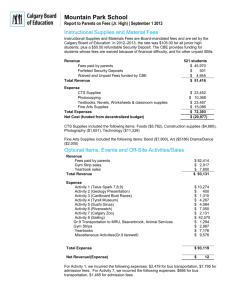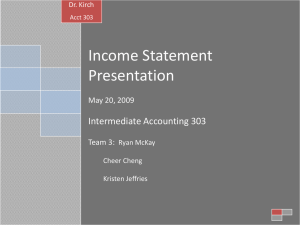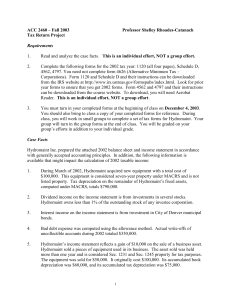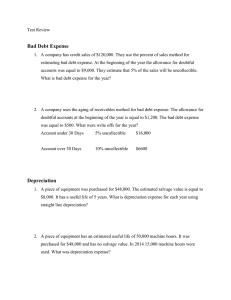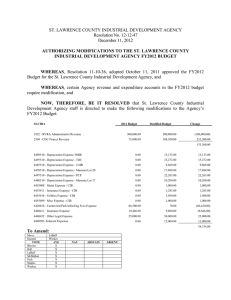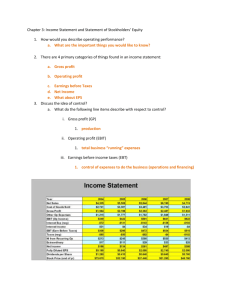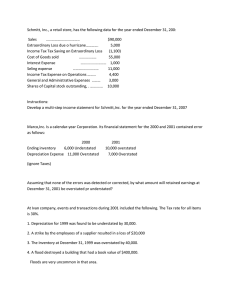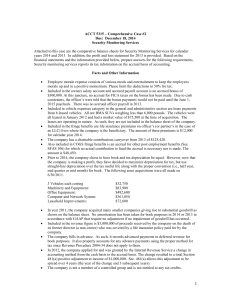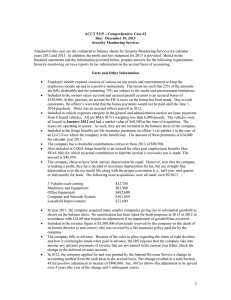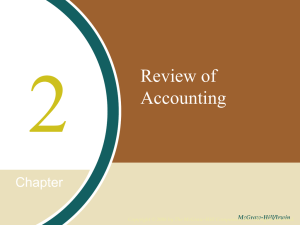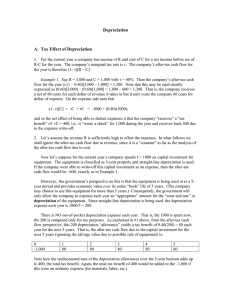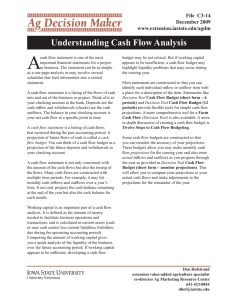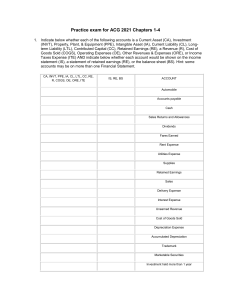Income Statements - Hartland High School
advertisement
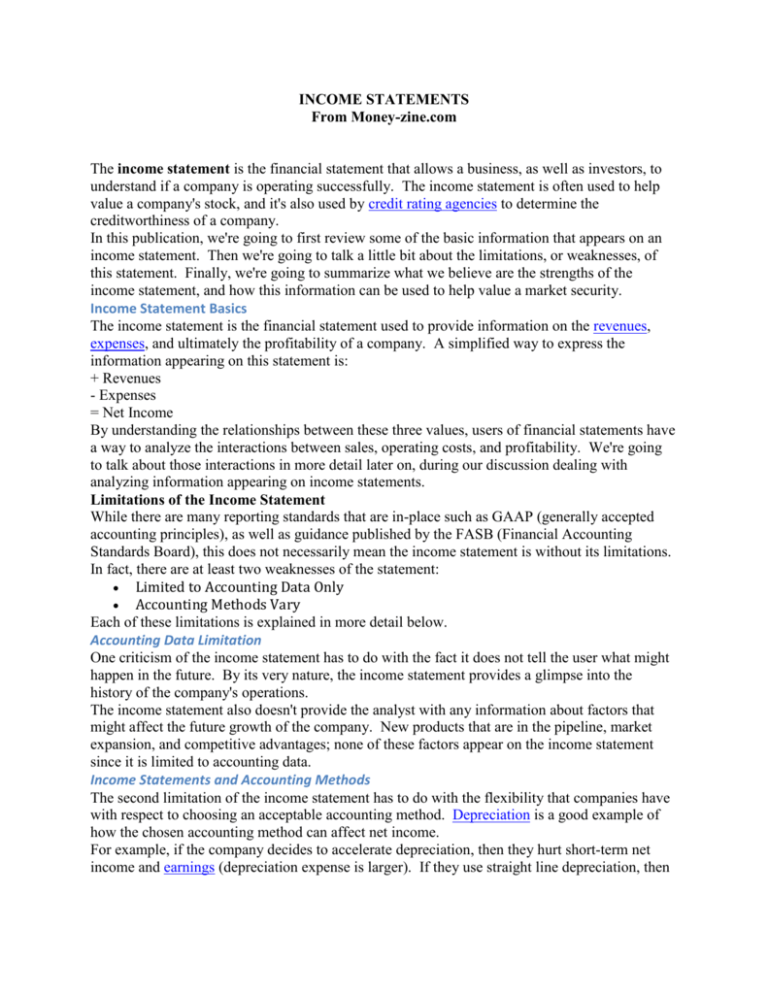
INCOME STATEMENTS From Money-zine.com The income statement is the financial statement that allows a business, as well as investors, to understand if a company is operating successfully. The income statement is often used to help value a company's stock, and it's also used by credit rating agencies to determine the creditworthiness of a company. In this publication, we're going to first review some of the basic information that appears on an income statement. Then we're going to talk a little bit about the limitations, or weaknesses, of this statement. Finally, we're going to summarize what we believe are the strengths of the income statement, and how this information can be used to help value a market security. Income Statement Basics The income statement is the financial statement used to provide information on the revenues, expenses, and ultimately the profitability of a company. A simplified way to express the information appearing on this statement is: + Revenues - Expenses = Net Income By understanding the relationships between these three values, users of financial statements have a way to analyze the interactions between sales, operating costs, and profitability. We're going to talk about those interactions in more detail later on, during our discussion dealing with analyzing information appearing on income statements. Limitations of the Income Statement While there are many reporting standards that are in-place such as GAAP (generally accepted accounting principles), as well as guidance published by the FASB (Financial Accounting Standards Board), this does not necessarily mean the income statement is without its limitations. In fact, there are at least two weaknesses of the statement: Limited to Accounting Data Only Accounting Methods Vary Each of these limitations is explained in more detail below. Accounting Data Limitation One criticism of the income statement has to do with the fact it does not tell the user what might happen in the future. By its very nature, the income statement provides a glimpse into the history of the company's operations. The income statement also doesn't provide the analyst with any information about factors that might affect the future growth of the company. New products that are in the pipeline, market expansion, and competitive advantages; none of these factors appear on the income statement since it is limited to accounting data. Income Statements and Accounting Methods The second limitation of the income statement has to do with the flexibility that companies have with respect to choosing an acceptable accounting method. Depreciation is a good example of how the chosen accounting method can affect net income. For example, if the company decides to accelerate depreciation, then they hurt short-term net income and earnings (depreciation expense is larger). If they use straight line depreciation, then net income in earlier years will be higher. But it will be lower in the future (all things being equal). Market analysts pay careful attention to these details because it can tell them a lot about the quality of earnings. Has a company chosen to use more liberal accounting methods to increase short-term performance? It happens all the time. Valuing Companies Using the Income Statement Even with all of its limitations, the income statement is a very important financial document when it comes to valuing securities or getting a feel for the creditworthiness of a company. With that in mind, we're going to break down this valuation section into two parts: Analysis by Shareholders Analysis by Creditors Each of these approaches is discussed in more detail below. Operating Expense Ratio The operating expense ratio is a measure that is often used to figure out how well a company is able to control their operating expenses. The operating expense ratio is a good example of a comparative measure. This means you'd want to analyze this measure using a comparative income statement (one containing multiple years) and examine the trend in operating expense ratio. Operating expense ratio is calculated using the following formula: Operating Expense / Net Sales The lower the ratio, the better the company is performing. So a favorable trend would be one where the ratio is declining, while an unfavorable trend would be one where the ratio is increasing.



